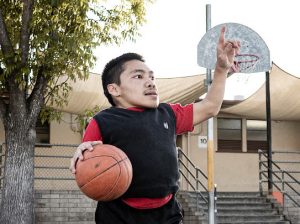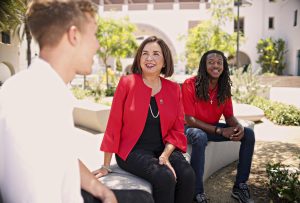
At the Alvarado Hospital Medical Center’s Infant and Child Development Lab, located near San Diego State, researchers are looking into young children’s language comprehension skills as part of a $2.2 million grant accorded to various universities by the National Institutes of Health. SDSU, University of California San Diego, the University of Geneva in Switzerland and Concordia University in Montreal, Canada, are all taking part in this study. SDSU associate professor and developmental psychologist Margaret Friend, is leading the investigation alongside a team of researchers.
“One part of (the study) is trying to find out how well early language predicts what children are doing later on in terms of how they’re solving problems and how ready they are to attend school,” Friend said.
The research will be analyzing English-speaking infants, but also those speaking Spanish and French, as well as monolingual children versus bilingual children.
“It seems very important that we look at this in many languages, because we want to get a sense of whether we can generalize across these different language groups and especially whether we can generalize across one-linguals and bilinguals in terms of how well their earliest language experiences predict what’s going to happen when they get ready for school,” Friend, who is testing English-learning infants and Spanish-learning infants, said. “Our interest is in how well they’re learning whatever language they’re learning and what that predicts about being ready for school.”
In total, 250 infants will be tested across the four different universities. Children are first tested at 16 months and then every six months until they are four-and-a-half. To calculate language perception, children are shown two objects on a touch-screen, a ball and a car, for example, and they have to touch the object the experimenter indicates. Another task includes having the infants learn new words. They are shown an object they have never seen before, taught the name of it and experimenters must assess how fast they learn the name of the object in comparison to a distracter, which is an object they have not named but given the same attention.
As they get older, children will be asked to do more cognitive tasks, such as telling a story from a picture book.
“All of these things are going to be important for sitting still in school, for being able to comprehend reading when they start reading at school, for building even math concepts,” Friend said. “We’re really interested in how early can we get a good measure of where kids are developmentally and then … predict upward until their school readiness and if we can predict that, then there’s a whole lot we can do in between to intervene.”
SDSU student and psychology major Anya Mancillas, an online coder in the lab who is helping Friend recruit participants, said she gets a lot out of being part of this study.
“It’s very interesting, a lot of fun. It’s hard work but you get to work with really amazing people, Dr. Friend, the doctoral students. You get to be a part of the community, which is nice. As a Hispanic it’s really nice to be able to be involved in something that’s so huge for them, for San Diego and for education. Working with people and becoming part of this project that’s international, as an undergrad, is pretty cool,” Mancillas said.










